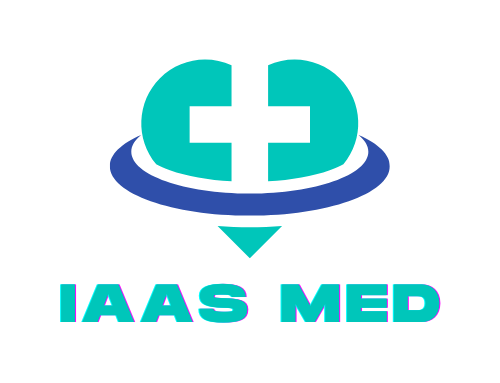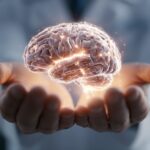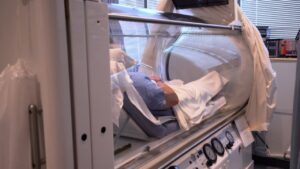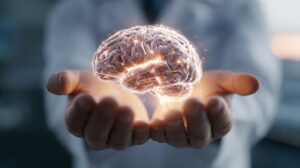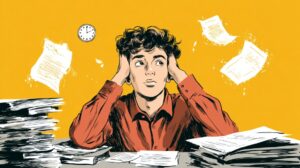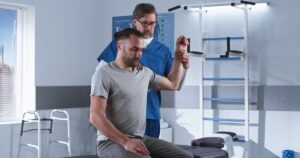Hormonal shifts are often associated with women, but men face significant changes too, especially after 40.
Testosterone plays a major role in men’s health, and as levels drop, noticeable changes occur.
With people living longer, recognizing these shifts becomes more important than ever.
Men who address these changes early can manage symptoms effectively and maintain quality of life well into older age.
Age-Related Hormonal Changes
Hormonal shifts in men begin gradually and often silently. Most men are unaware that by their late 30s, their bodies begin altering internal chemistry.
These changes rarely make headlines, yet they directly influence how a man feels, functions, and ages.
Testosterone, often called the primary male hormone, becomes less available as the years go by.
While subtle at first, the decline becomes more obvious with age, showing up in:
- Energy levels
- Mood
- Physical strength
- Libido
Natural Testosterone Decline
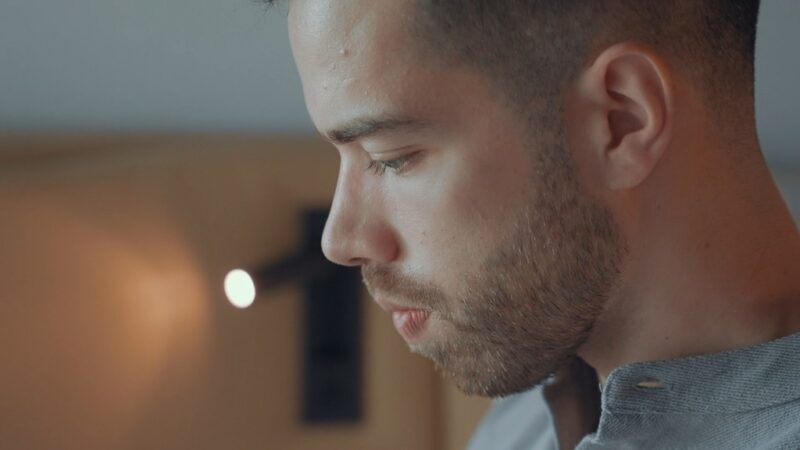
Testosterone production doesn’t halt suddenly. It tapers slowly, starting around the mid-30s, with the effects building gradually.
- Begins declining around age 30–40
- Average drop: 1–2% annually
- By age 70, levels can fall by up to 50% compared to youthful peak
- Often goes unnoticed until symptoms become disruptive
Though the reduction is not immediate, long-term effects accumulate. Decreased testosterone levels are often shrugged off as “just getting older,” when in fact, they may signal hormonal imbalance requiring attention.
Symptoms of Decline
Lower testosterone can disrupt multiple body systems at once. Physical performance, emotional health, and sexual function are all at risk when this hormone diminishes.
Symptoms often appear in clusters, sometimes dismissed as stress or poor sleep.
Key symptoms include:
- Persistent fatigue even with adequate rest
- Mood swings and irritability
- Lower sexual desire
- Difficulty achieving or maintaining erections
- Gradual loss of muscle mass and strength
- Poor sleep or frequent nighttime awakenings
Each symptom adds another layer of difficulty to daily routines. Ignoring these warning signs can lead to broader health complications later in life.
Male Menopause (Andropause)
Andropause is a term used to describe a phase in many men’s lives marked by decreased testosterone and noticeable changes in wellbeing.
Though it doesn’t arrive with the sudden intensity of female menopause, the effects can be equally disruptive.
- Reported in up to 30% of men over 70
- Gradual onset, typically less dramatic than in women
- Fatigue, depression, low libido, and reduced physical performance are common
- Not always directly caused by testosterone but closely associated with it
While some may argue the term “male menopause” is misleading, the symptoms are widely documented.
Recognition of this phase leads to earlier action and better management of age-related health shifts.
Factors Influencing Hormonal Imbalance
Hormonal changes after 40 are not purely biological. Daily routines, health conditions, and activity levels play an enormous role in shaping testosterone levels.
While aging naturally slows hormone production, certain behaviors and medical issues speed up the decline. Attention to these factors can help mitigate negative effects.
Lifestyle and Health Conditions
Modern habits often sabotage hormone regulation.
Choices made over decades, what to eat, how much to sleep, and how stress is handled, build a foundation for either hormonal balance or disruption.
Chronic illnesses add another layer of risk.
Key contributors include:
- Obesity: Increases conversion of testosterone into estrogen, leading to hormonal imbalance. Excess fat, especially around the abdomen, is particularly problematic.
- Type II Diabetes: Frequently associated with reduced testosterone levels, making metabolic control more difficult.
- Poor Sleep Patterns: Inadequate REM sleep interferes with natural testosterone production cycles.
- Chronic Stress: Sustained emotional or physical stress elevates cortisol, which actively suppresses testosterone synthesis.
Even one of these issues can alter hormone levels. Together, they amplify the problem.
In rare but serious cases, hormonal imbalance may also contribute to male breast cancer. Elevated estrogen levels, BRCA gene mutations (such as BRCA2), and family history are recognized risk factors.
Organizations like hisbreastcancer.org provide vital resources for understanding this overlooked health issue and offer support for men and their families dealing with breast and hereditary cancer.”
Inactivity and Aging

Hormonal health suffers when movement declines.
Physical activity directly supports testosterone production and muscle retention. Without regular exercise, natural aging processes accelerate.
Important facts about inactivity and aging:
- Muscle mass starts declining at age 30, with a loss of 3–5% per decade.
- Reduced activity means less hormonal stimulation, creating a cycle of energy loss and muscle depletion.
- Sedentary behavior exacerbates fatigue, which then discourages movement, worsening hormonal decline.
Maintaining strength and engaging in regular physical movement isn’t just about fitness—it’s about hormone preservation.
Addressing these lifestyle and age-related triggers can slow down testosterone loss and improve long-term well-being.
Consequences on Physical Health
Men over 40 experience a cascade of physical changes tied directly to hormonal decline.
Reduced testosterone levels don’t just affect mood or sex drive—they have a significant impact on how the body functions day to day. Muscle composition shifts, metabolism slows, and strength diminishes.
They ripple across the body’s systems and contribute to broader health challenges.
Loss of Muscle Mass and Strength

Protein synthesis relies heavily on testosterone. When levels drop, the body’s ability to repair and build muscle becomes compromised.
Muscle fibers shrink, strength wanes, and endurance takes a hit. With weaker muscles, bones face more stress and become vulnerable to fractures.
Key consequences of muscle loss include:
- Decreased physical strength and endurance
- Higher likelihood of falls and bone fractures
- Reduced balance and coordination
- Loss of functional independence in later years
- Difficulty maintaining physical activity and exercise routines
Spinal and hip fractures in older men are often linked to weakened muscular support and brittle bones, two conditions commonly associated with hormonal decline.
Maintaining muscle mass becomes less about vanity and more about staying upright, mobile, and independent.
Changes in Metabolism
Testosterone influences how efficiently the body burns calories.
As levels fall, metabolism slows, making it easier to gain weight and harder to shed fat, particularly in the abdominal region.
Men who once maintained a healthy weight with ease often find themselves struggling despite unchanged eating habits or exercise routines.
Metabolic consequences typically include:
- Increased abdominal fat storage
- Greater risk of insulin resistance
- Higher likelihood of developing Type 2 diabetes
- Increased cholesterol and triglyceride levels
- Elevated cardiovascular disease risk
Body composition shifts toward fat retention, compounding other age-related health concerns.
Diagnosis and Treatment
Recognizing hormonal imbalance and addressing it proactively can change the course of aging for men over 40.
Many overlook the signs or attribute them to “just getting older,” but subtle symptoms may indicate something more significant.
When to Seek Help
Hormonal imbalances don’t always scream for attention. They often whisper through low energy, stubborn weight gain, or declining interest in sex, even when diet and exercise seem adequate.
After 40, checking testosterone levels annually provides essential data that can guide better health decisions.
Common signs that warrant medical evaluation:
- Chronic fatigue not resolved by rest
- Decreased libido or performance issues
- Unexplained weight gain, particularly around the midsection
- Mood swings, irritability, or signs of depression
- Difficulty building or maintaining muscle mass
A comprehensive blood panel, combined with symptom tracking, helps build a clear picture. Healthcare providers can then determine the most appropriate course of action.
Testosterone Replacement Therapy (TRT)
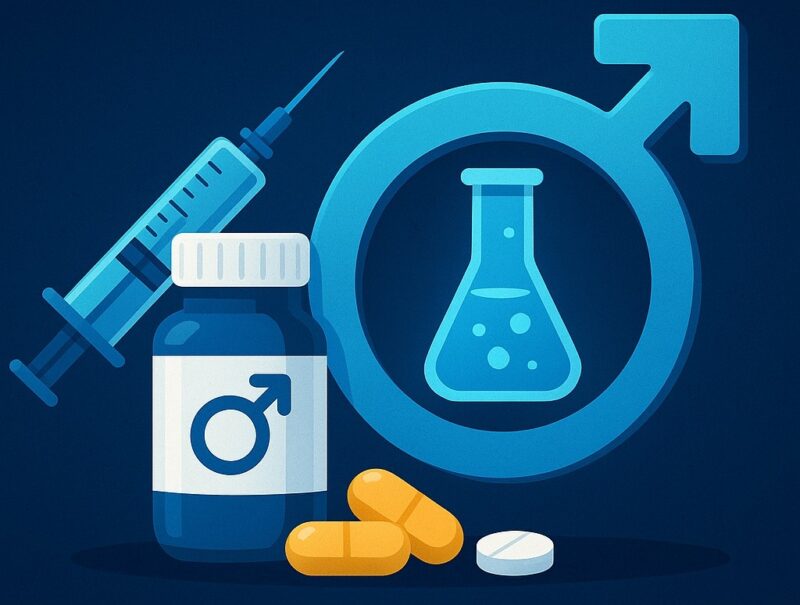
TRT offers several delivery options, each designed to replenish testosterone and improve symptoms.
Choosing the right method depends on health status, lifestyle, and personal preference.
Options come with varying risks and benefits, so a customized approach is essential.
Available TRT delivery methods:
- Injections: Provide controlled doses, often every 1–2 weeks
- Gels and creams: Applied daily, but risk transfer through skin contact
- Patches: Offer steady absorption but may cause skin irritation
- Oral medications: Convenient, though less common
- Subdermal pellets: Implanted under the skin for slow release over months
Potential drawbacks and precautions:
- Hormonal spikes or uneven absorption
- Elevated red blood cell count
- Acne or skin reactions
- Contraindicated for men with certain cancer histories
- Need for regular monitoring of hormone levels and side effects
Despite benefits, only about 5% of men diagnosed with low testosterone pursue treatment. Hesitation often comes from lack of awareness, fear of side effects, or stigma.
A thorough consultation with a medical provider can help dispel myths and determine eligibility.
Summary
Hormonal health matters for men just as much as it does for women, especially after 40. Addressing lifestyle choices, staying active, and undergoing regular health screenings make a noticeable difference.
Treatment options like TRT should be weighed carefully, but awareness and proactive management can improve physical and emotional health significantly.
Personal strategies and medical advice tailored to individual needs form the best path forward.
Related Posts:
- Choosing Between a Lower Endoscopy vs Colonoscopy
- What Is Calculus of Gallbladder with Acute…
- When to Trust and When to Question Health Advice You…
- The Role of Dopamine and Norepinephrine in Mental Health
- Workplace Health Consultations: What Gets Reviewed and Why
- How to Restore Gut Health After Antibiotics
